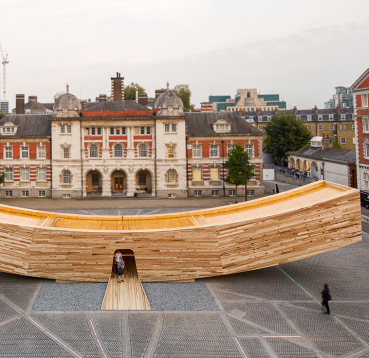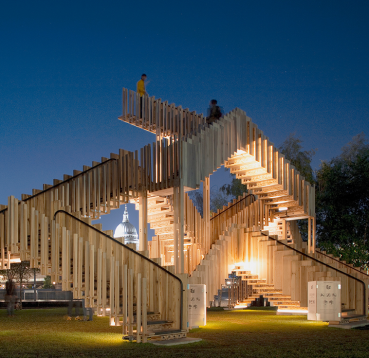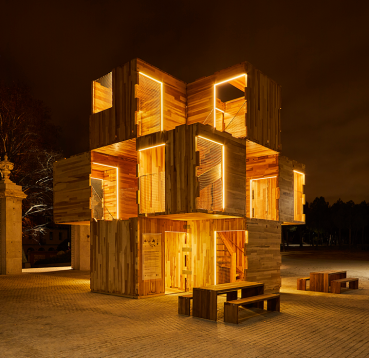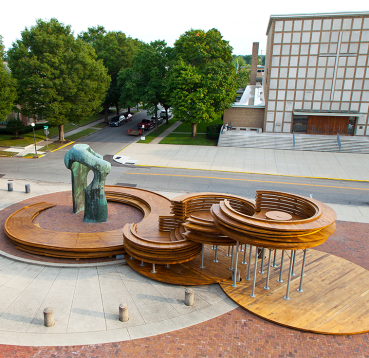-
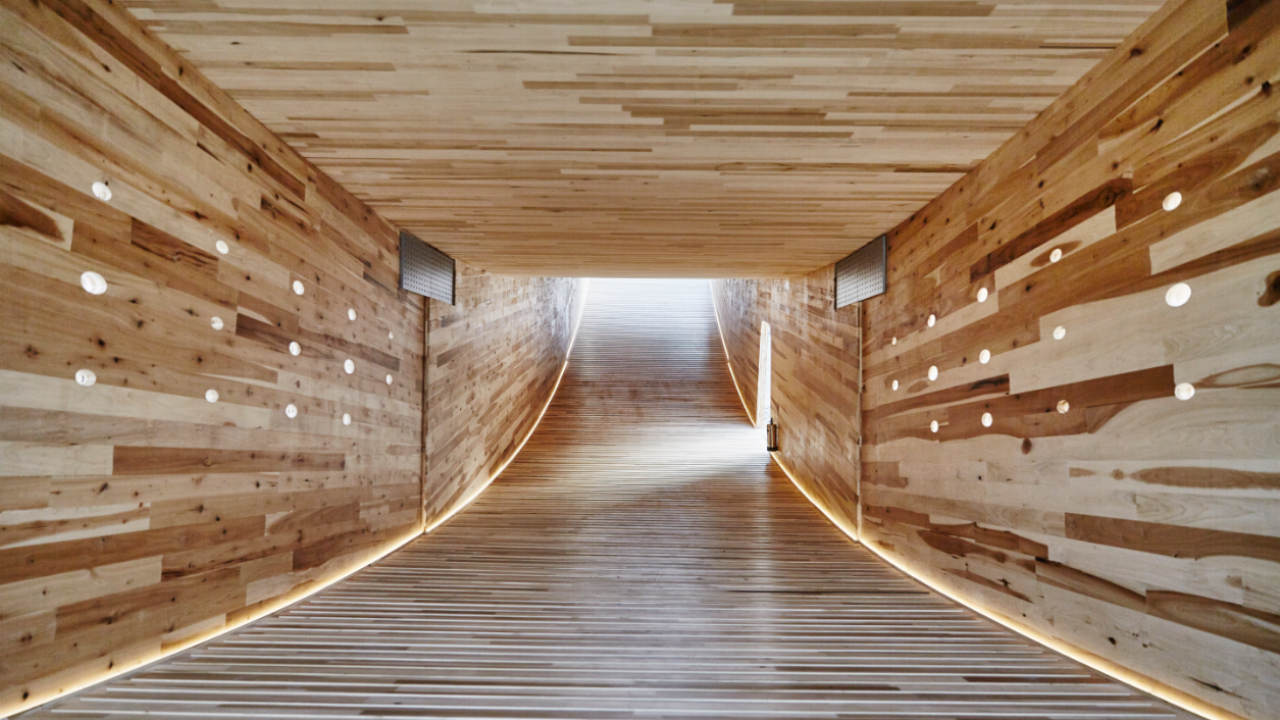
-
The Smile
The Smile, by Alison Brooks Architects made using American tulipwood CLT
-
-
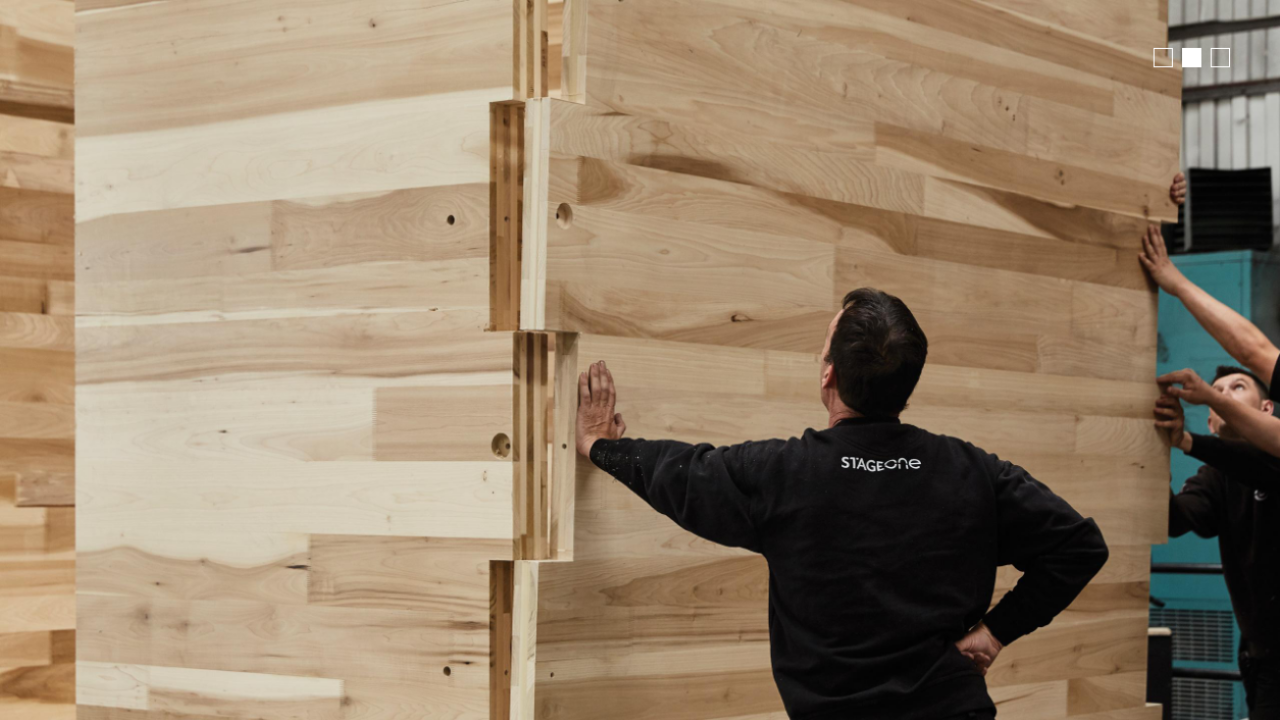
-
MultiPly
MultiPly by Waugh Thistleton Architects made using American tulipwood CLT
-
-

-
Maggies Oldham
Maggie's Oldham by dRMM Architects made using American tulipwood CLT
-
-
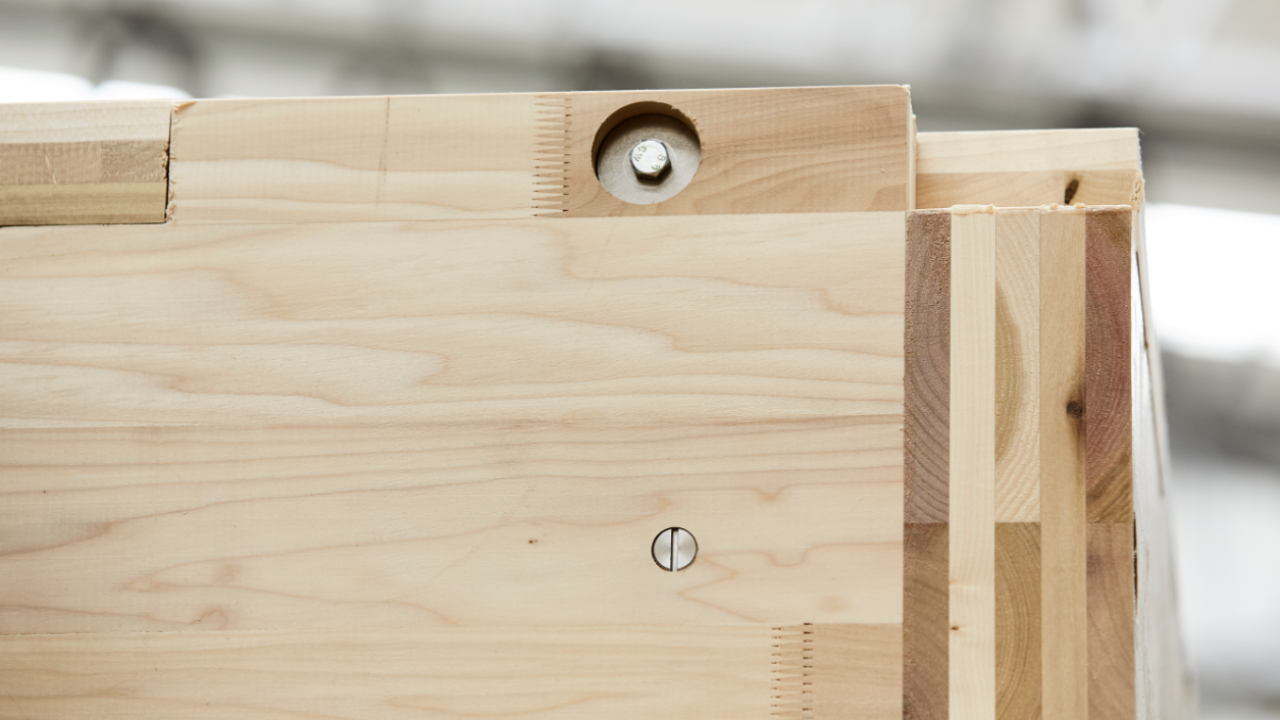
-
MultiPly
MultiPly by Waugh Thistleton Architects made using American tulipwood CLT
-
-
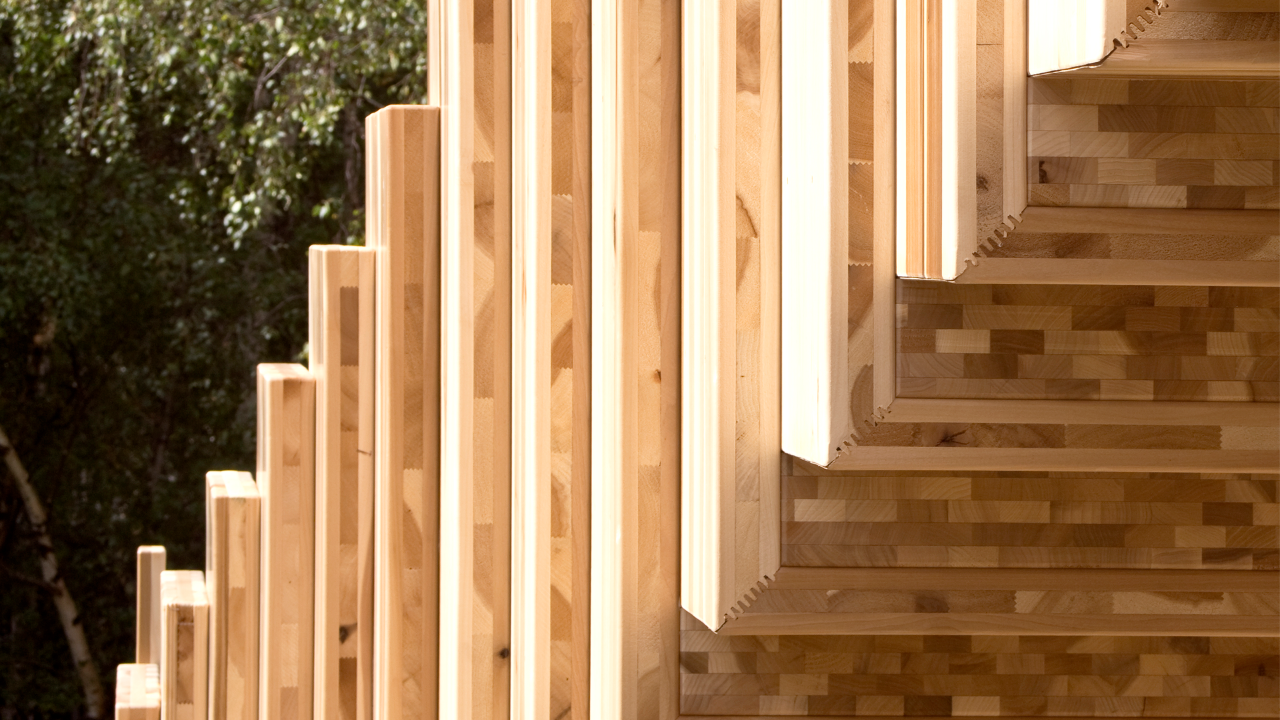
-
The Endless Stair
The Endless Stair by dRMM architects made using American tulipwood CLT
-
What is cross-laminated timber?
The development of cross-laminated timber, or CLT, has transformed the structural use of timber. From small beginnings in the mid-1990s, building in CLT is now a widely-accepted and increasingly popular method of timber construction, especially for larger commercial developments. The last 20 years has seen an exceptional rise in its use. Reasons for this are related to its outstanding capability for prefabrication and its remarkable structural and environmental benefits.
The versatility of CLT is leading to new and innovative timber buildings. There are many benefits to building in CLT: the speed of build is much quicker; the build process is less noisy, and timber construction is much lighter, meaning reduced foundation requirements and the prospect of extra storeys. The environmental advantages are considerable too, with the timber panels acting as long-term carbon stores. The health and wellbeing offered by timber buildings is also now well-documented and the insulation and thermal performance of the building is considerably improved.
How is it made?
CLT is a clever way to create large structural panels from small pieces of timber. CLT consists of planks (or lamellas) of sawn, glued, and layered wood, where each layer is oriented perpendicular to the previous one. By joining layers of wood perpendicular to each other, structural rigidity for the panel is obtained in both directions, similar to plywood but with thicker components. In this way, the panel has great tensile and compressive strength. These panels can be used to form wall, floor and roof panels. The panels are quick to produce in a factory environment and they can be machined to very high tolerances. Panel sizes are typically 16 metres by 2.95 metres but can be larger.
The first CLT factories started operating in Europe in the early 1990’s utilising the abundant supply of the native softwood, pine and spruce. For 20 years, Europe dominated CLT production but it is now developing as a global business with new factories opening in all major continents, with each region exploring its potential with raw material that is the most cost effective and abundant.
The role of American hardwoods
Since 2012, AHEC, working in close collaboration with engineering consultants ARUP, have pioneered research and undertaken experiments with enlightened architects, into the potential of using hardwood as an alternative fibre resource to softwood for CLT manufacturing. AHEC identified American tulipwood as an ideal pioneer species due to the fact it is exceptionally strong for its weight. The thinking behind this research was to offer relatively thin CLT panels of much higher strength and stiffness, together with a different aesthetic, to the look of softwoods. Over the last 10 years AHEC has collaborated on a number of landmark CLT projects utilising American tulipwood CLT and each project has been undertaken with an element of research and development to expand the knowledge around American tulipwood as a raw material for commercial hardwood CLT production.
Examples of use
The first demonstration of the CLT potential of American tulipwood was the Endless Stair, designed by dRMM architects as a landmark project for the London Design Festival in 2013. Inspired by the images of Dutch graphic artist, M.C. Escher, the three storey network of stairs is now widely recognised as the pioneer use of hardwood in CLT manufacture. Tests at Trento University on the strength properties of the small experimental CLT panels, produced in Italy by Imolegno, revealed superior strength compared to spruce, with rolling sheer values, a key performance indicator, three times greater.
Building on what was learnt for Endless Stair, AHEC approached Alison Brooks Architects in 2016, challenging them to push the boundaries of what was possible with tulipwood CLT by working with some of the largest hardwood panels ever produced. These first ever industrially produced hardwood CLT panels, including some curved, were produced in Germany by Zueblin Timber. The result was The Smile, another landmark project for LDF, a 34m long double cantilever inverted arc that was capable of carrying up to 60 people at either end. The 12 multi layered panels up to 14m long and 4.5m wide were connected by more than six thousand self-tapping screws. The Smile is still widely acknowledged as one of the most complex and challenging CLT structures ever built and could not have been made in softwood.
2017 saw the completion of the first permanent building made from American tulipwood CLT, Maggie’s Cancer Centre in Oldham in the UK, designed by dRMM Architects. This award winning building is thoughtful, holistic, therapeutic, warm and filled with surprises – even the smallest detail has been carefully considered and chosen to improve patient wellbeing. It stands as a pivotal moment for modern architecture and timber in construction.
The most recent demonstration of the structural capability of tulipwood CLT was in the 2018 London Design Festival project MultiPly – a three storey, three dimensional maze structure designed by Waugh Thistleton Architects. The complete structure comprised 17 interconnecting modules made from more than a hundred 60mm and 100mm thick, 2.6m square CLT panels. This modular structure with its flexible design and connection detail allowed it to be re-erected in a different configuration as part of Milan Design Week in 2019 and again in a new cuboid arrangement for the 2020 Madrid Design Festival.
Working with ARUP, Construction Scotland Innovation Centre (CSIC) Glenalmond Timber and Napier University, AHEC were able to produce the first ever CLT panels made in the UK. During the manufacturing process, data collection and testing made it possible to create a detailed production schedule for tulipwood CLT and enable a comparison with published data for softwood CLT. The information is available in a technical document Tulipwood CLT Properties and Manufacturing Requirements.
Examples of Use
